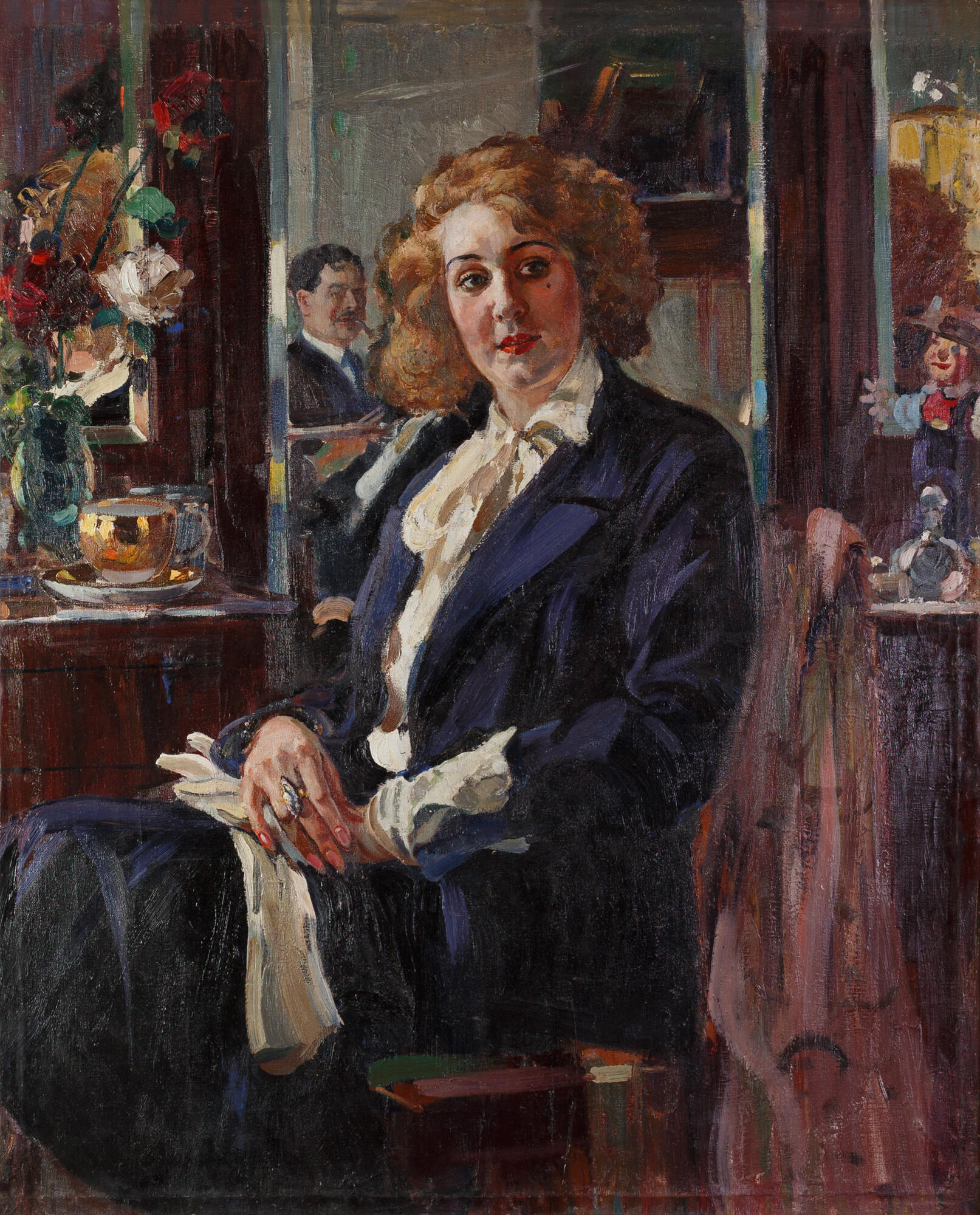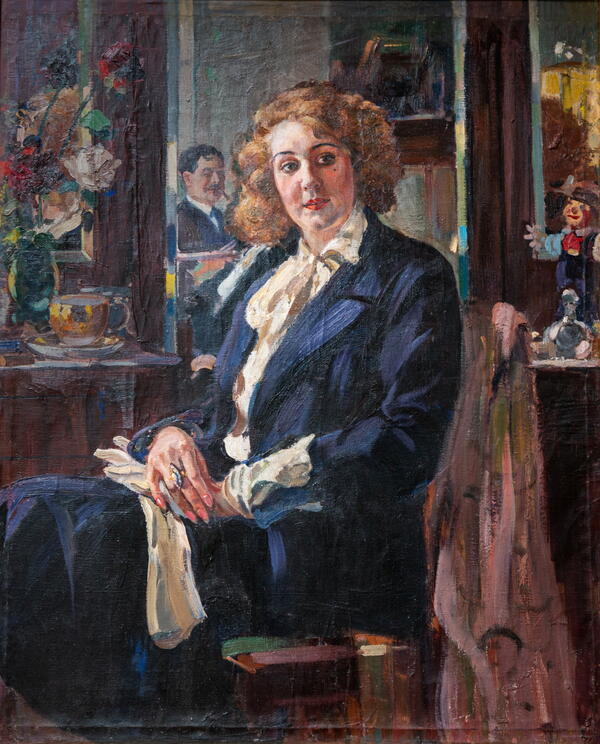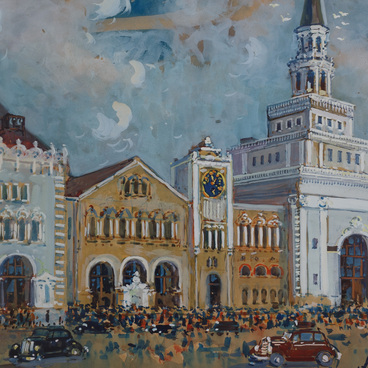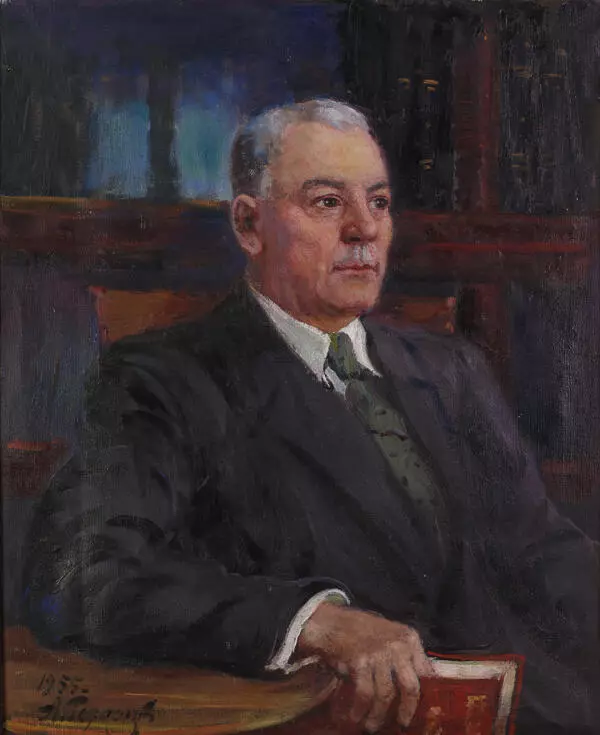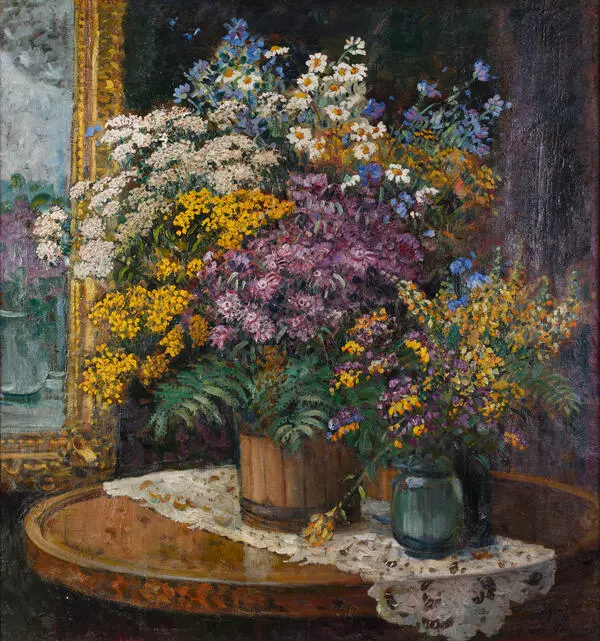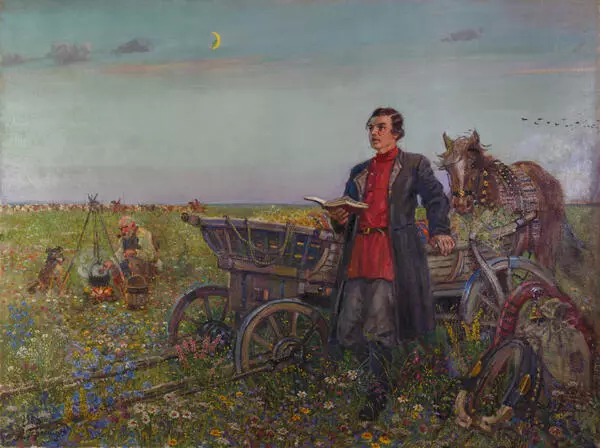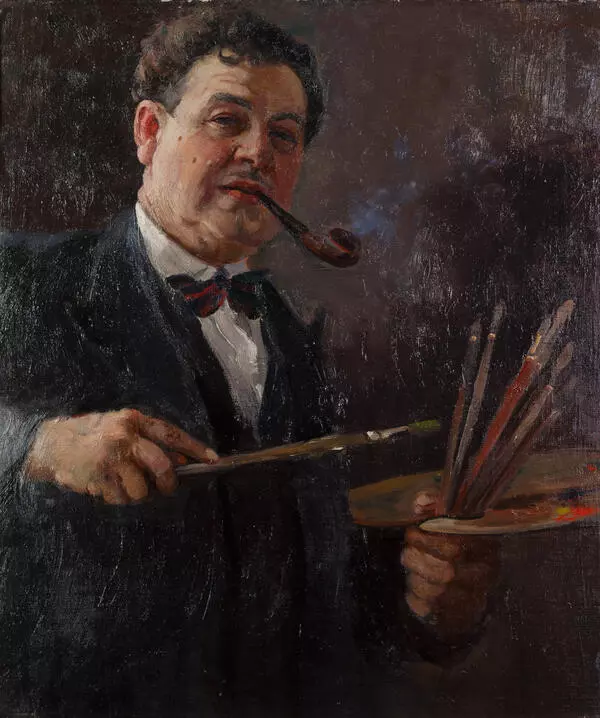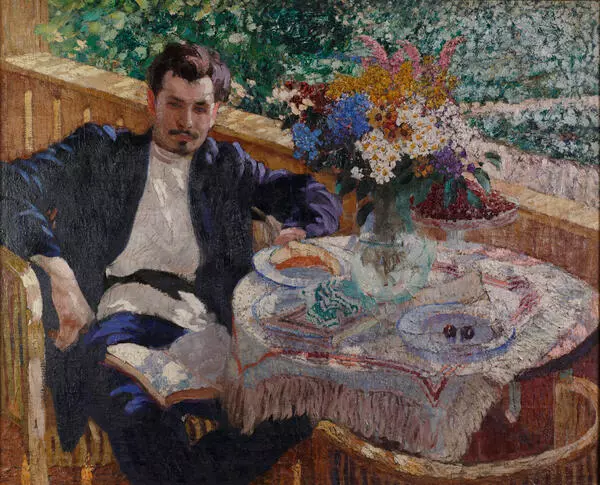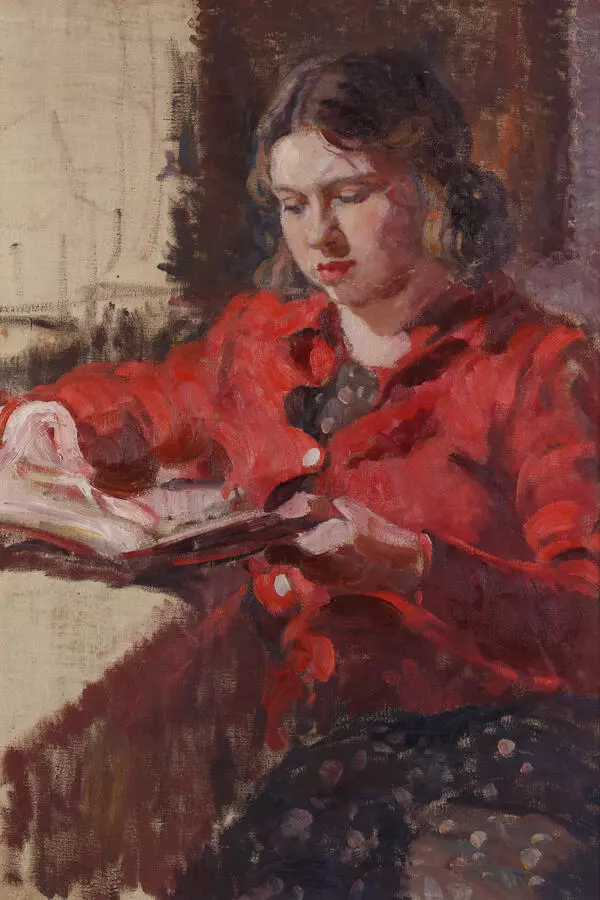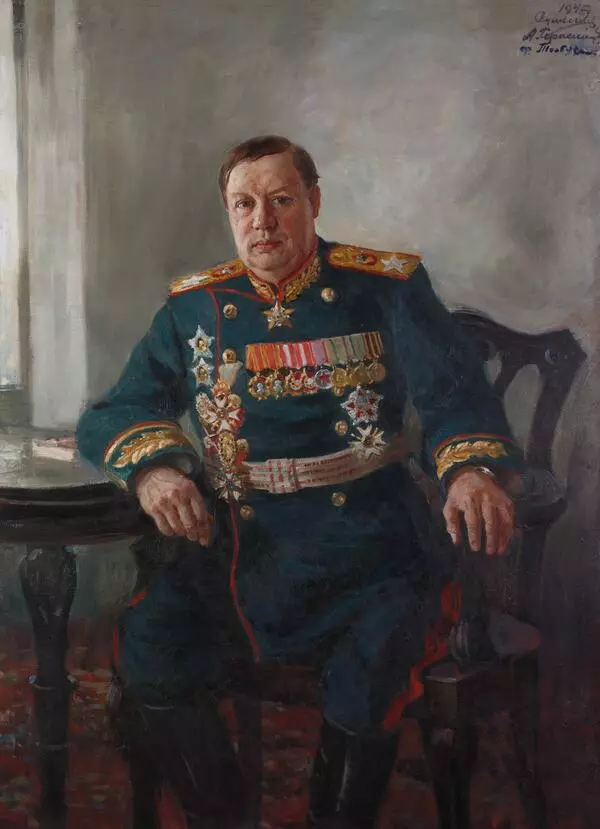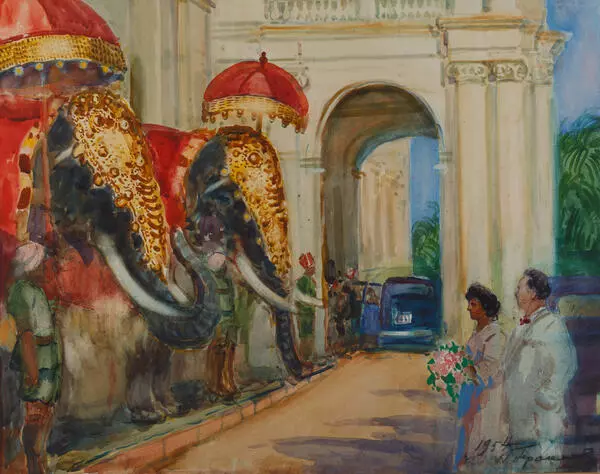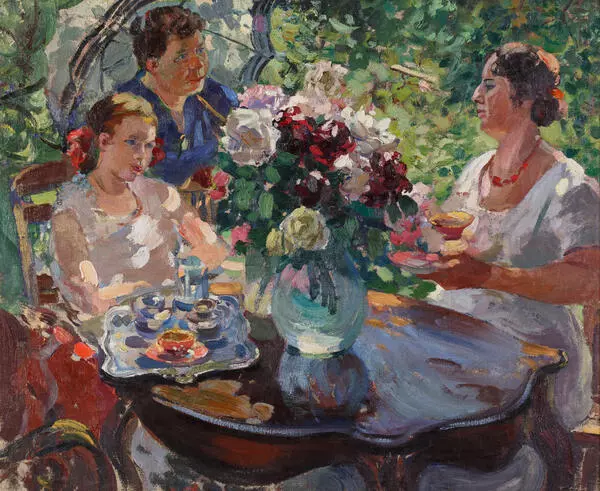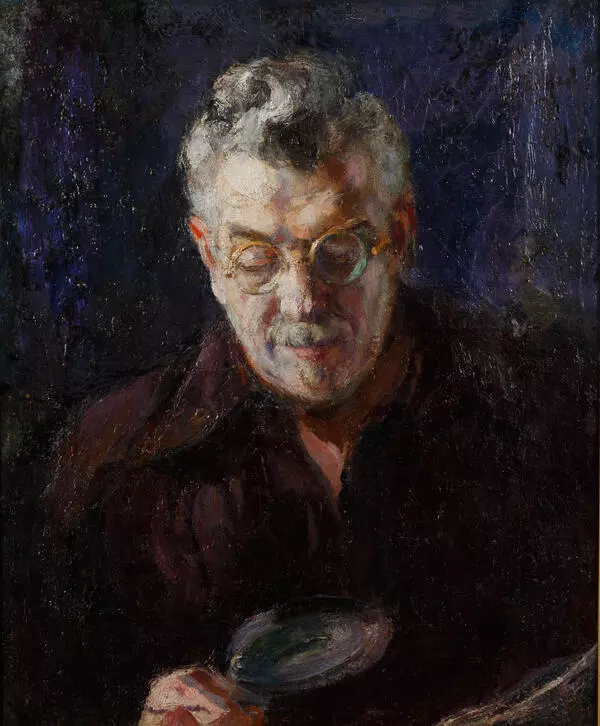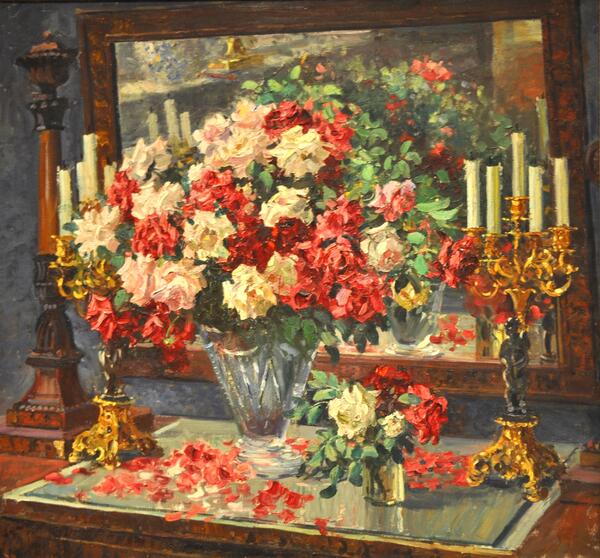The artist Alexander Mikhailovich Gerasimov was on friendly terms with many prominent people of Russian and international culture. He created a whole gallery of their portraits, which are thought to be outstanding examples of realism. Alexander Gerasimov once said, “I consider portrait painting to be the main genre of my work, that embodies the essence of me as an artist.” Alexander Gerasimov created more than 300 portraits over the course of his career. Judging by the manner and the extent of the excellency of his painting, the painter’s favorite models came from the creative intelligentsia: those were the people who received recognition through hard work, just like the artist himself. Alexander Gerasimov’s interest in theater was reciprocated by the same interest in his painting from the Moscow theater circle. Gerasimov’s talent was welcomed at such Moscow stages as the theater of Vsevolod Meyerhold and the Maly Theater.
This portrait is wonderful not only due to the model’s attractiveness but also because of the presence of theater ambiance in it. The sitter is depicted in an armchair, resting in an uncontrived, relaxed manner; her attentive and friendly eyes speak of the ability to connect and empathize with her audience, as well as of the profoundness of her creative nature. She seems engaged in an enthusiastic conversation with someone who remains “behind the scenes” — the artist himself. The image is emphasized with every detail — the interior, the special elements of the clothes, and the accessories. Alexander Gerasimov portrayed himself in the background, sitting at ease next to the model.
The artist paid special attention to painting people’s hands. Hands are sometimes considered a person’s second portrait. They reveal not only the sitter’s personality but also their occupation and require the same degree of resemblance to the model as the face. The artist did not ask the woman to remain motionless; on the contrary, he strove to reflect the posture, movements, and facial expressions as uncontrived as possible. This feeling of sympathy and mutual understanding between the artist and the model is the main emotional undertone in the actress’ image. When creating a portrait, Alexander Gerasimov always tried to convey the individuality of the portrayed person and, as a result, managed to leave behind a certain chronicle of his era.
He portrayed the woman the way he saw her — as a beautiful and talented person. She is shown as a spectacular beautiful lady, wearing an exquisite dress with a large white bow on her chest, as if emerging from bygone times. Even the massive ring, which might seem so unusual for a Soviet woman, does not look out of place in this portrait, because Alexander Gerasimov depicted the new creative elite.
This portrait is wonderful not only due to the model’s attractiveness but also because of the presence of theater ambiance in it. The sitter is depicted in an armchair, resting in an uncontrived, relaxed manner; her attentive and friendly eyes speak of the ability to connect and empathize with her audience, as well as of the profoundness of her creative nature. She seems engaged in an enthusiastic conversation with someone who remains “behind the scenes” — the artist himself. The image is emphasized with every detail — the interior, the special elements of the clothes, and the accessories. Alexander Gerasimov portrayed himself in the background, sitting at ease next to the model.
The artist paid special attention to painting people’s hands. Hands are sometimes considered a person’s second portrait. They reveal not only the sitter’s personality but also their occupation and require the same degree of resemblance to the model as the face. The artist did not ask the woman to remain motionless; on the contrary, he strove to reflect the posture, movements, and facial expressions as uncontrived as possible. This feeling of sympathy and mutual understanding between the artist and the model is the main emotional undertone in the actress’ image. When creating a portrait, Alexander Gerasimov always tried to convey the individuality of the portrayed person and, as a result, managed to leave behind a certain chronicle of his era.
He portrayed the woman the way he saw her — as a beautiful and talented person. She is shown as a spectacular beautiful lady, wearing an exquisite dress with a large white bow on her chest, as if emerging from bygone times. Even the massive ring, which might seem so unusual for a Soviet woman, does not look out of place in this portrait, because Alexander Gerasimov depicted the new creative elite.
